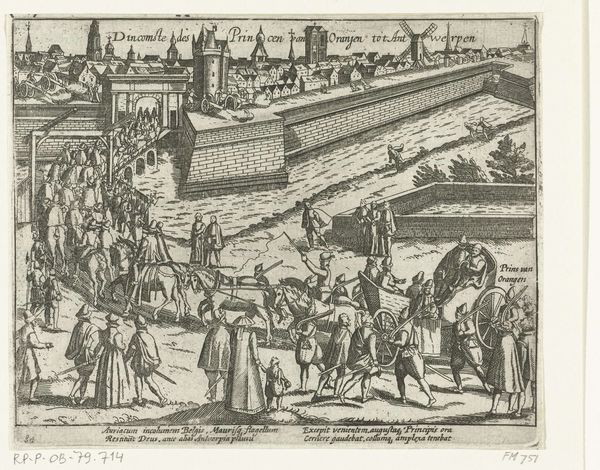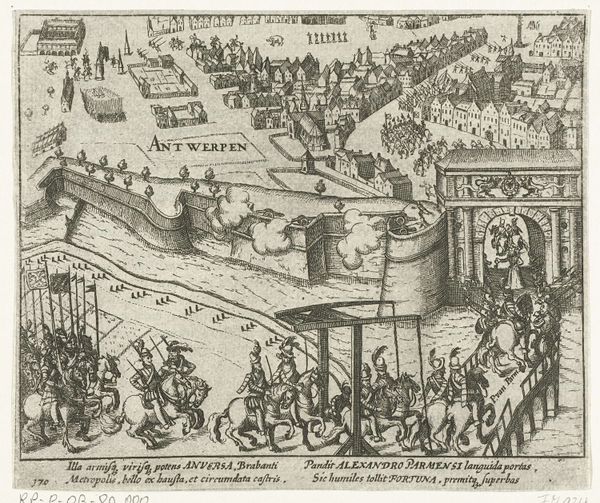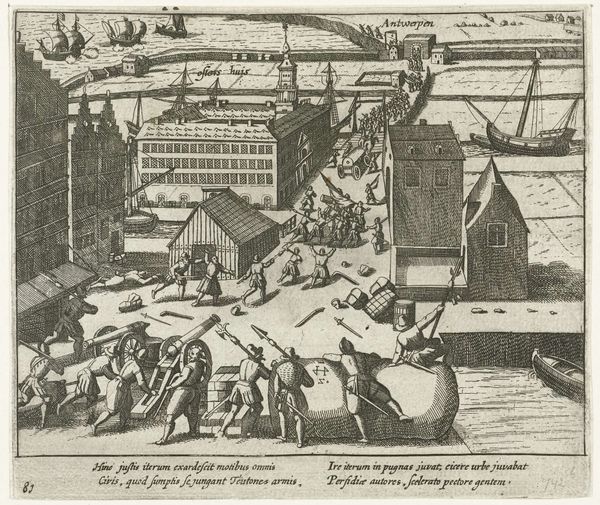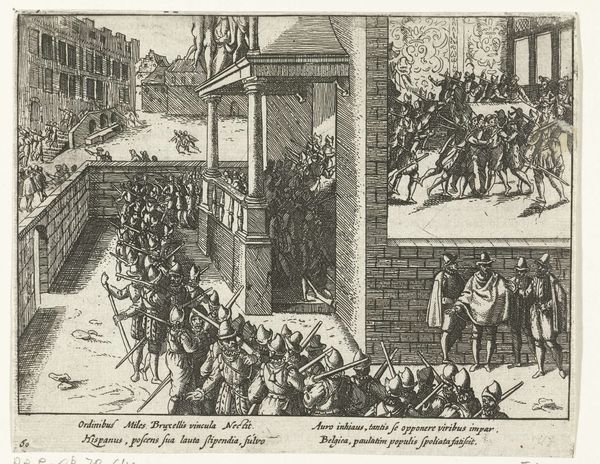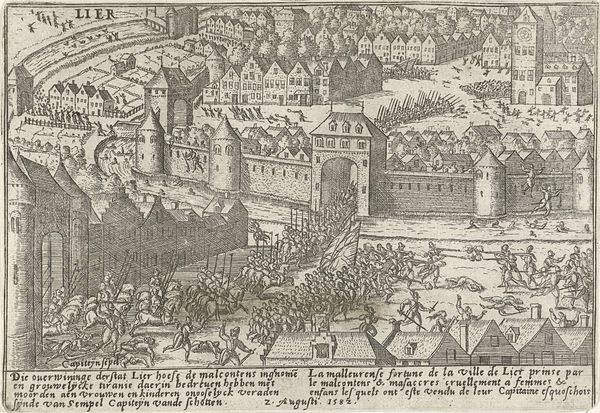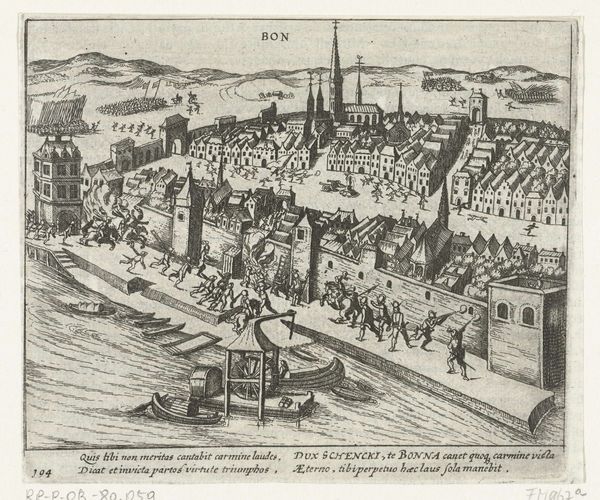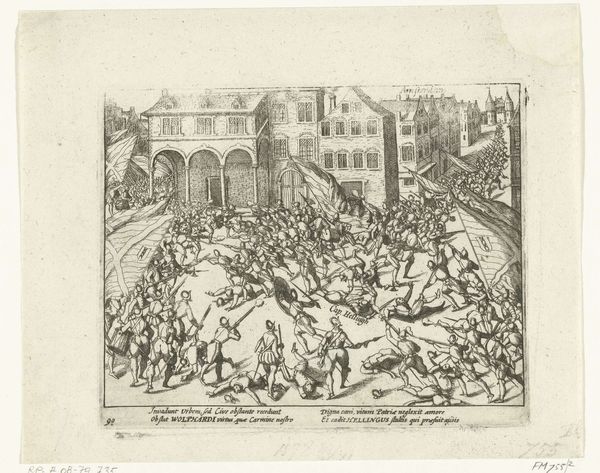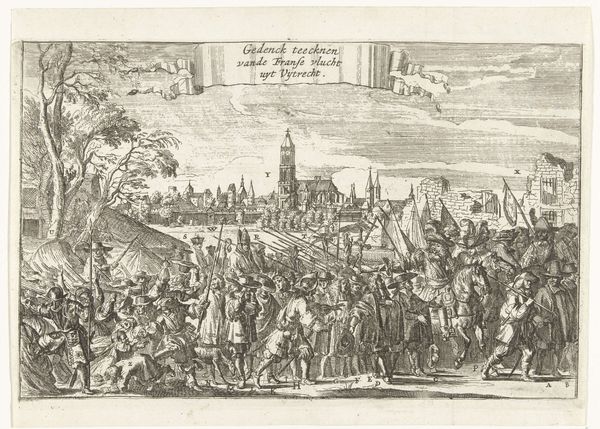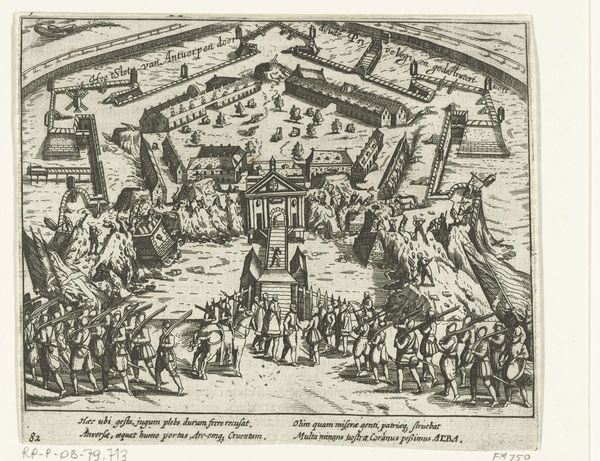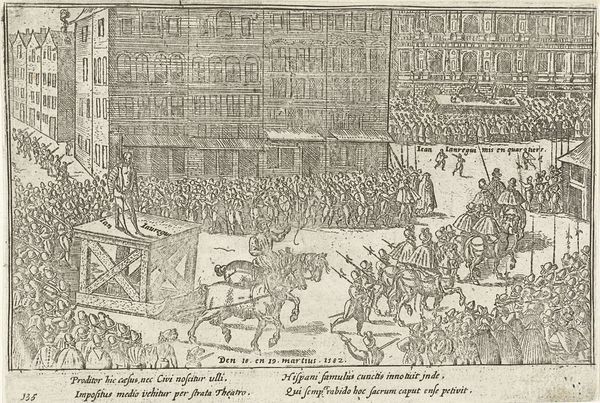
#
pen drawing
#
mechanical pen drawing
#
pen illustration
#
pen sketch
#
old engraving style
#
personal sketchbook
#
linework heavy
#
pen-ink sketch
#
pen work
#
sketchbook drawing
Dimensions: height 135 mm, width 179 mm
Copyright: Rijks Museum: Open Domain
Curator: This pen drawing, simply titled Spaanse Furie: beschieting van de stad, 1576, offers a chilling visual document of a dark moment in history. Though the artist remains anonymous, we believe it was created sometime between 1613 and 1615. Editor: What hits me first is the chaos, the raw violence depicted through that frenetic linework. It feels immediate, like a sketch torn from someone's personal sketchbook at the front. Look at all that smoke. Curator: Indeed. The linework is quite heavy, a defining feature. Notice how the artist uses it to create depth and texture, particularly in rendering the figures and the architecture. There’s a clear intention to capture the sheer volume of the attacking forces. The hatching and cross-hatching define the spatial relations. Editor: There's also something almost theatrical about the composition, wouldn’t you say? The burning building up front becomes something sinister. Everyone is being put down in such a confined area; it adds a layer of horror, if I imagine I was in it. A wall closes in, dividing and defining different levels of conflict with terrible intensity. Curator: Precisely. And the choice of pen and ink lends a certain historical gravitas, anchoring the scene to a specific era and aesthetic sensibility. If the picture were done in colour, it would change everything about the art work. Editor: I get what you mean, this scene needed something old. But I feel it becomes, if anything, almost like a caricature. It’s grim, sure, but something in that "old engraving style" lends the artwork something like an uncanny touch, a slight cartoon-ish look to people and situations in an otherwise highly traumatic period of war, pillage and bloodshed. Curator: I see it more as an attempt to reconcile artistic skill with historical account, to present as complete and balanced a view as possible, from what he would have experienced, heard or seen. A "complete" work of history for the period. It currently resides in the Rijksmuseum. Editor: Yes, quite the reminder of our complex, sometimes unsettling, artistic heritage. Definitely a compelling glimpse into the artist's… dark side. Curator: And it also gives you pause for thought as to the realities of this historical period.
Comments
No comments
Be the first to comment and join the conversation on the ultimate creative platform.

